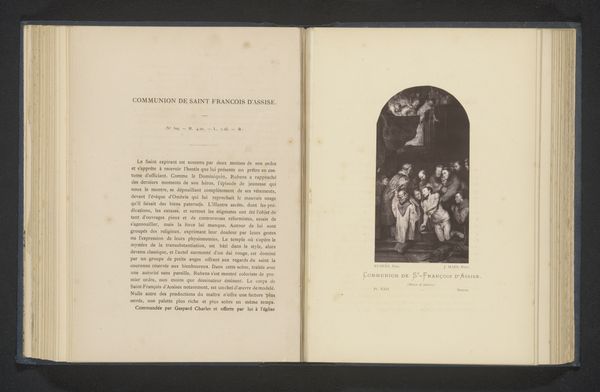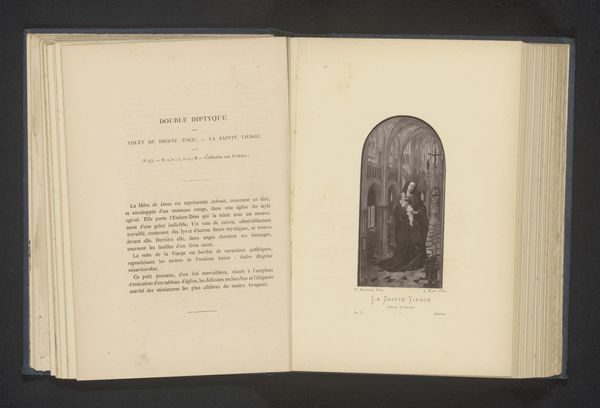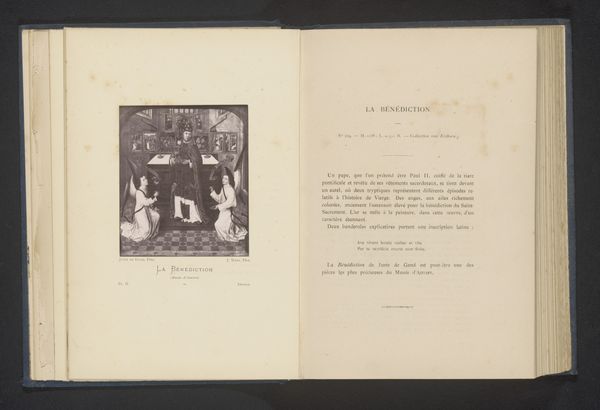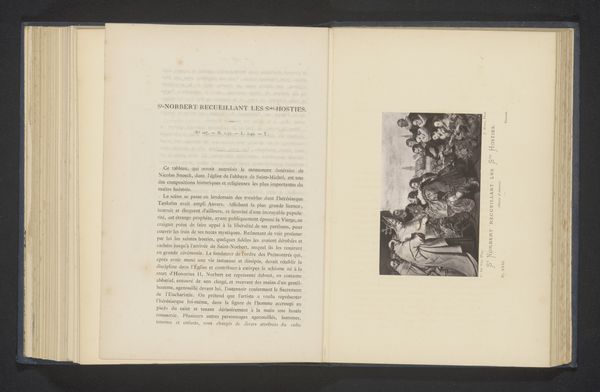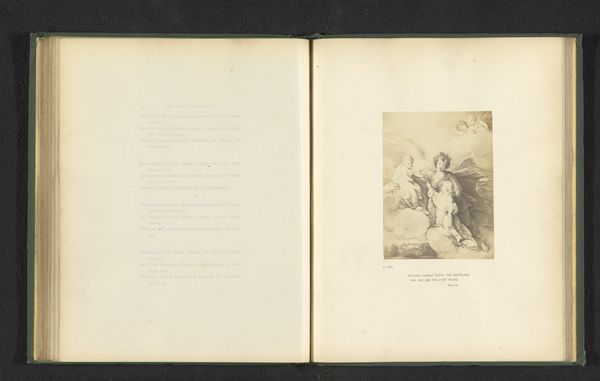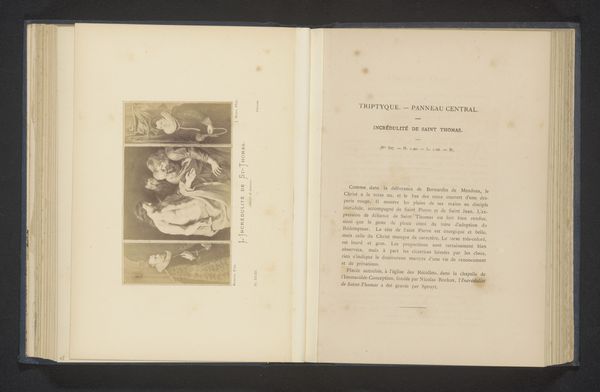
Fotoreproductie van een schilderij van de kruisiging van Christus door Jan Provoost before 1883
0:00
0:00
print, oil-paint, photography
# print
#
oil-paint
#
landscape
#
figuration
#
photography
#
history-painting
Dimensions: height 134 mm, width 109 mm
Copyright: Rijks Museum: Open Domain
This photogravure of Jan Provoost's painting, "Crucifixion", was made by Alexandre, a photographer, probably at the end of the 19th century. Photogravure is an intaglio printmaking process that uses photography to transfer an image to a metal plate. The plate is then etched and printed. This skilled process allowed for the wide distribution of images of artworks, expanding access and appreciation in an era before mass digital reproduction. The sepia tones and delicate details of the photogravure enhance the somber mood of Provoost's original painting, a scene of immense historical and cultural significance. By translating the textures of paint into a tangible form, Alexandre's work captures both the artistry and the cultural context of the original. This photogravure bridges the gap between traditional painting and modern photographic techniques, illustrating how modes of production and distribution influence our understanding and appreciation of art. It challenges the traditional distinction between art and craft by elevating reproductive techniques to an art form in itself.
Comments
No comments
Be the first to comment and join the conversation on the ultimate creative platform.



